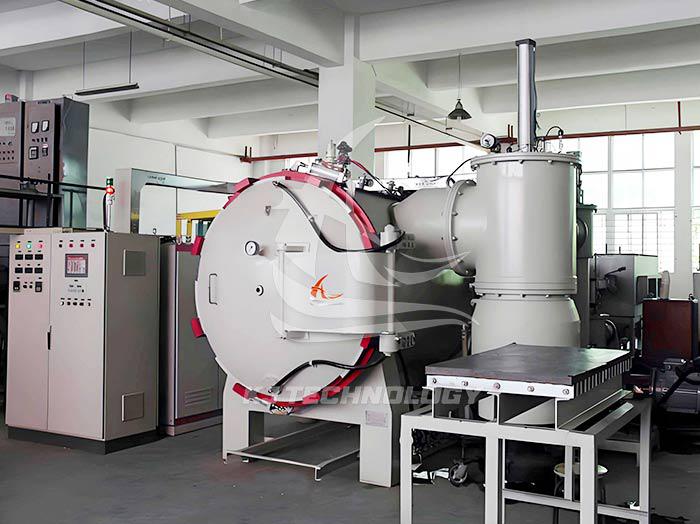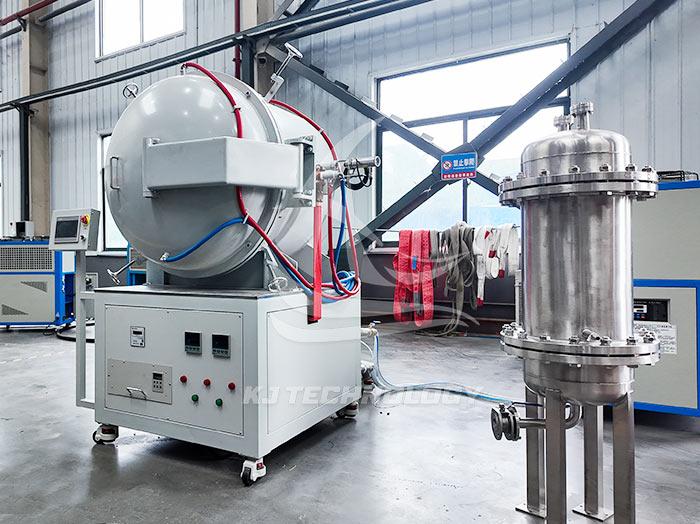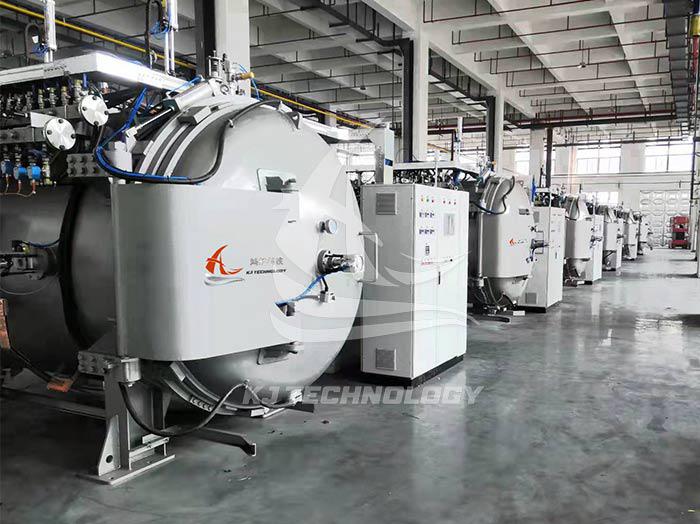Common faults and solutions of vacuum annealing muffle furnace
 05-15-2025 Author: KJ technology
05-15-2025 Author: KJ technology
Vacuum annealing muffle furnace is commonly used in industrial production for high-temperature treatment, material annealing and other processes. The possible faults that may occur during its operation involve multiple aspects such as vacuum system, heating system, control system, etc. The following are common faults and corresponding solutions:
1. The vacuum degree cannot meet the requirements
Fault phenomenon: The vacuum degree inside the furnace is lower than the set value or cannot be maintained.
Possible reasons:
Vacuum pump malfunction or performance degradation.
Poor sealing of the furnace body (such as aging of the sealing ring and air leakage).
The vacuum pipeline is blocked or the valve is not fully opened.
The materials inside the furnace release gases (such as adsorbed moisture, oil stains, etc.).
resolvent:
Check the working status of the vacuum pump, replace the oil or repair the pump body.
Check the sealing ring of the furnace body and replace it if necessary; Check the sealing parts such as furnace doors and observation windows.
Clean the vacuum pipeline and ensure that the valve is fully open.
Pre treat the materials inside the furnace (such as drying, degreasing).
2. Heating system malfunction
Fault phenomenon: The temperature inside the furnace cannot reach the set value or the temperature fluctuates greatly.
Possible reasons:
Heating element damage (such as broken resistance wire).
Temperature control system malfunction (such as damage to temperature controllers and thermocouples).
The power supply is unstable.
Improper position or poor contact of the thermocouple inside the furnace.
resolvent:
Check the resistance value of the heating element, confirm if it is damaged, and replace it if necessary.
Calibrate or replace temperature controllers and thermocouples.
Check if the power supply voltage is stable and install a voltage regulator if necessary.
Adjust the position of the thermocouple to ensure it matches the temperature field inside the furnace.
3. Control system malfunction
Fault phenomenon: The device cannot start, the program runs abnormally, or an alarm is triggered.
Possible reasons:
Control system software malfunction.
Damage to electrical components (such as relays and contactors).
Sensor malfunction (such as pressure sensor, temperature sensor).
Power failure or poor grounding.
resolvent:
Restart the control system and reinstall or update software if necessary.
Check electrical components and replace damaged parts.
Calibrate or replace the sensor.
Check the power circuit to ensure good grounding.
4. Overheating of the furnace body or uneven local temperature
Fault phenomenon: The surface temperature of the furnace body is too high or the temperature distribution inside the furnace is uneven.
Possible reasons:
The insulation layer of the furnace body is damaged.
The distribution of heating elements is unreasonable or aging.
The airflow inside the furnace is not smooth (such as fan failure).
resolvent:
Repair or replace the insulation layer.
Adjust the layout of heating elements or replace aging elements.
Check the operation of the fan and clean the ventilation opening.
5. Abnormal noise or oil leakage of vacuum pump
Fault phenomenon: The vacuum pump produces loud noise or oil leakage during operation.
Possible reasons:
The internal components of the vacuum pump are worn.
Low oil level or oil contamination.
The seal is damaged.
resolvent:
Disassemble the vacuum pump and replace worn parts.
Supplement or replace the vacuum pump oil.
Replace the seal.
6. The furnace door cannot be opened or closed normally
Fault phenomenon: The furnace door is stuck, unable to seal, or difficult to open.
Possible reasons:
The sealing ring of the furnace door is aging or deformed.
The hinge or locking mechanism of the furnace door is damaged.
Abnormal pressure inside the furnace (such as vacuum not being released).
resolvent:
Replace the sealing ring.
Repair or replace the furnace door hinge and locking mechanism.
Ensure that the pressure inside the furnace is released before opening the furnace door.
7. Power failure
Fault phenomenon: The equipment cannot be powered on or trips frequently.
Possible reasons:
Power line malfunction.
The fuse is blown or the circuit breaker is tripped.
Poor grounding.
resolvent:
Check the power circuit and repair any open or short circuits.
Replace the fuse or reset the circuit breaker.
Ensure that the equipment is properly grounded.
Daily maintenance suggestions
Regular inspection: Regularly check the condition of vulnerable parts such as vacuum pumps, heating elements, seals, etc.
Cleaning and maintenance: Keep the furnace clean and avoid contamination such as metal powder and oil stains.
Calibration equipment: Regularly calibrate key instruments such as temperature controllers and vacuum gauges.
Record data: Record device operating parameters for easy troubleshooting.








